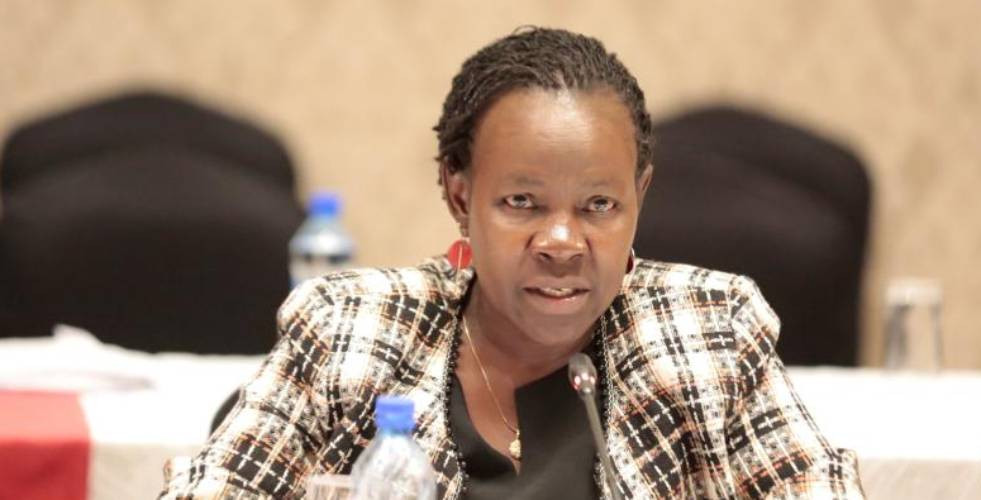Since 2000, China’s influence in Sub-Saharan Africa either through direct investment, lending or as a trading partner in harvesting the sub-region’s untapped expansive natural resources has been impressive.
Now the emerging engagement will soon be extended to higher education. According to a World Bank briefing, the First Africa-China-World Bank Education Partnership Forum will be organised by Shanghai Jiao Tong University, whose agenda will be to establish university linkages in science, technology, engineering and mathematics, collectively known as STEM disciplines.
Eighty participants from Sub-Saharan African countries will head to China for the first meeting on July 10-15 in Beijing and Shanghai. “The forum aims to expose the African delegation to the state of art of higher education science and technology available in Chinese universities and help build bridges between Africa and China,” says World Bank. The high-level delegation will include vice chancellors and policy makers.
Academic heights
Indeed, Kenya will have representatives in the delegation that will be exposed to Chinese efforts to reach academic heights in frontiers of science and technology in agriculture, renewable energy, information and communication technology, health, railway and education. Subsequently, the visiting African delegation will share lessons and practical approaches in teaching, learning, research, innovation and technology transfer in developing technical and scientific capability in higher education.
They will also share policy and practices in university governance and management as well as how to form new partnerships and explore modalities of collaboration between government agencies, tertiary education and private sector.
No doubt this will be a great learning experience, taking into account that China has in recent decades made great strides in higher education, research and development. According to the United Nations Educational Scientific and Cultural Organisation, over the last decade, China has experienced a sharp uphill trajectory in science, technology and innovation.
“China’s science and technology talent has been growing, with universities in 2015 reaching about two million postgraduate students on top of 26 million undergraduates,” says UNESCO in its flag-staff study, UNESCO Science Report: Towards 2030.
To date, China has the largest pool of human resources for science and technology and it is expected to become the world’s top research and development spender by 2019, as it is spending two per cent of its Gross Domestic Product. China has the ambition to spend 2.5 per cent of its GDP on research by 2020. With this, it will overtake expenditure of European Union and the US in research and development.
But while there is nothing wrong for African academia looking for alternative solutions in China or elsewhere, time has come for African countries to start reassessing the roles of their universities. Universities in Sub-Saharan Africa accomplished the duty of training civil servants -- the reason they were specifically designed for by the colonial administration -- long time ago but have kept locked in that state till today.
But even when new universities are established, they are modeled on the same lines without taking into account the critical national or regional developmental needs. Speaking in Nairobi during the forum of partnerships and innovation for skills development in Africa organised by World Bank in April, Ethiopian Minister of Education Samuel Kifle Kidane said the main problem with Sub-Saharan African university education is because 80 per cent of graduates are glued into humanities. “Africa’s population is growing and it has considerable natural resources that remain unexploited,” said Kidane.
That is the exact situation in Kenya where a large segment of about 565,000 students enrolled in 2,066 programmes are in humanities and social sciences. Although in the last few years universities in Kenya have reported efforts to reduce the share of enrollment in humanities and social sciences, it is hard to audit those assertions, taking into account that a big menu of degree programmes are classified as sciences when they are grounded in studies in humanities.
Such programmes include bachelors and master’s degrees in eco-tourism, hospitality management, community development, entrepreneurship, mass communication, project planning and management, strategic management and development studies, among many others.
Granted that in some disciplines there is a thin line between what is traditionally regarded as sciences and humanities, some universities have almost obliterated Bachelor of Arts and Master of Arts degrees from their academic programmes in favour of applying the term science loosely. In retrospect, vocational courses that used to be offered at certificate or diploma level in polytechnics and middle-level colleges have acquired new status as science-oriented degrees without any improvement in their curriculum.
For instance, in the last two decades, there has been a rush into the universities to get degrees, as standards had been markedly lowered, especially in courses categorised as ‘market driven.’ But one wonders whether the recent race for university credentialism has been necessary. What is worrying is whether one would become a better tourist guide or a hotel animator by having a degree.
Stay informed. Subscribe to our newsletter
According to Dr Carol Bidemi, an expert of higher education, in most universities in Kenya and elsewhere in the region, boundaries have been blurred between the offerings of full-fledged universities and vocational colleges. “Universities in the region are running the risks of preparing students for jobs based on historical and current demand, which may bear no relation to the demands of the future,” says Bidemi.
Fresh beginnings
But no matter what has transpired in the past, there is urgent need to address the issue of the role of universities in relation to development in the 21st century. No doubt there is much Kenya can learn from China and other countries such as Malaysia that had been fine-tuning their higher education by establishing completely new world-class research universities and establishing centres of excellence in old universities.
In the last two decades, China has been attracting back its cohort of academics and professionals working in foreign universities by offering them tenure and better working conditions in academia, a clear indication of its efforts in the ongoing global catch-up race with the US and European Union.
Kenya and Sub-Saharan African countries in general may have no such lofty ambitions, but they cannot afford to be bystanders when their population is expected to increase from the current 800 million to 1.4 billion in 2030 and thereafter rise to 2.1 billion by 2050, according to the International Monetary Fund.
According to the African Development Bank, the salvation for Sub-Saharan Africa lies in universities and other tertiary institutions creating high quality job opportunities by providing the relevant technical-dense skills.
Accordingly, many highly educated people but without dense technological skills in Kenya and elsewhere in Sub-Saharan Africa struggle to find jobs, points out, The Africa Competitiveness Report 2017, a joint study of the ADB, World Bank and the World Economic Forum.
The report argues that the main reason for this quagmire is entrenched in high deficiencies in foundational skills in mathematics -- a key subject in understanding STEM fields -- and which exposes deficiencies of secondary and tertiary school systems in most countries in Sub-Saharan Africa.
But whereas opening partnerships and linkages with China’s academia could be a learning experience, Kenyan leadership should know nothing short of improving quality of local basic and tertiary education systems will help eradicate development barriers now and in the future.)
 The Standard Group Plc is a
multi-media organization with investments in media platforms spanning newspaper
print operations, television, radio broadcasting, digital and online services. The
Standard Group is recognized as a leading multi-media house in Kenya with a key
influence in matters of national and international interest.
The Standard Group Plc is a
multi-media organization with investments in media platforms spanning newspaper
print operations, television, radio broadcasting, digital and online services. The
Standard Group is recognized as a leading multi-media house in Kenya with a key
influence in matters of national and international interest.
 The Standard Group Plc is a
multi-media organization with investments in media platforms spanning newspaper
print operations, television, radio broadcasting, digital and online services. The
Standard Group is recognized as a leading multi-media house in Kenya with a key
influence in matters of national and international interest.
The Standard Group Plc is a
multi-media organization with investments in media platforms spanning newspaper
print operations, television, radio broadcasting, digital and online services. The
Standard Group is recognized as a leading multi-media house in Kenya with a key
influence in matters of national and international interest.









